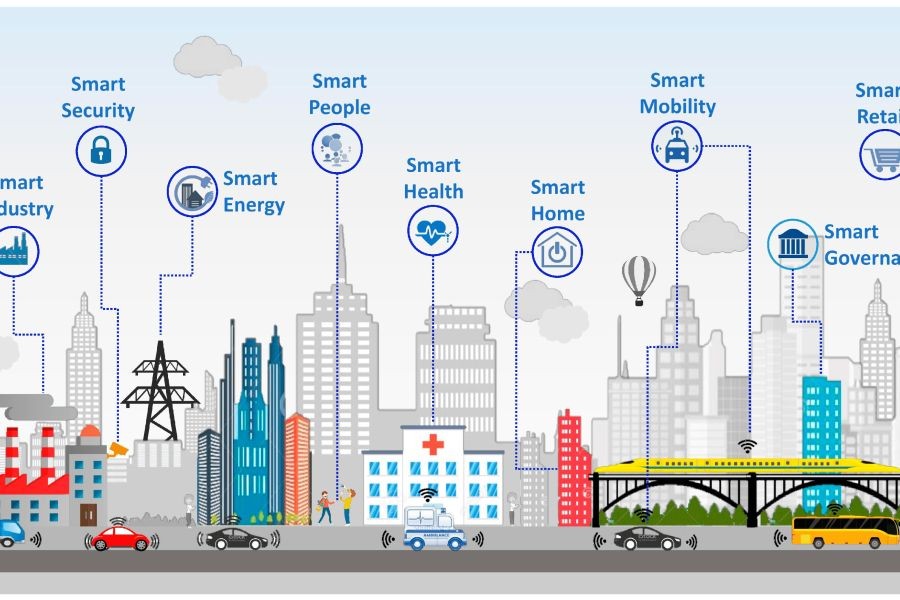The intersection of politics and urban planning is a nuanced and often contentious topic that has significant implications for Australian cities and their economic landscapes. Urban planning decisions are not made in a vacuum; they are influenced by political agendas, economic interests, and public needs. Understanding these influences is crucial for export and trade specialists in Australia who must navigate the complex environment that shapes infrastructure development and, ultimately, market accessibility.
The Influence of Politics in Urban Planning: An Overview
Urban planning is a multifaceted process that involves designing and regulating land use in urban areas. It aims to create sustainable and functional living environments. However, political influence can significantly alter planning outcomes. In Australia, political decisions can dictate the allocation of resources, the prioritization of projects, and the regulatory frameworks that impact urban development. According to the Australian Bureau of Statistics, government policies play a pivotal role in shaping urban infrastructure, influencing housing affordability, transportation networks, and commercial zoning.
Real-World Case Study: Sydney's WestConnex Project
Problem: Sydney faced severe traffic congestion, impacting economic productivity and quality of life.
- Background: The WestConnex project, a major infrastructure initiative, was proposed to alleviate congestion and improve transport efficiency.
- Political Influence: The project's approval was heavily influenced by state and federal government priorities, with significant funding allocated to ensure its progression.
Action: The project involved constructing new motorways and upgrading existing roads.
- Implementation: Politicians advocated for the project as a means to stimulate economic growth and enhance connectivity.
Result: The WestConnex project has significantly reduced travel times and improved access to key commercial areas.
- Economic Impact: It is projected to contribute over AUD 20 billion to the economy over 20 years, according to Infrastructure Australia.
Takeaway: The WestConnex project illustrates how political support can expedite infrastructure projects that have broad economic benefits. Export and trade specialists must consider how political agendas shape infrastructure development, affecting market access and logistics.
Data-Driven Insights: The Role of Government in Urban Planning
Government involvement in urban planning is essential for ensuring that development aligns with national economic goals and public welfare. According to the Reserve Bank of Australia, public infrastructure investment is a key driver of economic growth, contributing to increased productivity and competitiveness. However, the political landscape can lead to disparities in how resources are allocated, potentially skewing development towards politically advantageous areas.
In Melbourne, for example, recent government initiatives have focused on expanding public transportation networks to reduce urban sprawl and improve environmental sustainability. This aligns with the federal government's commitment to reducing carbon emissions and enhancing urban livability.
Pros and Cons of Political Influence in Urban Planning
Political influence in urban planning is a double-edged sword, offering both benefits and challenges.
Pros:
- Strategic Resource Allocation: Political agendas can prioritize areas in need of development, ensuring resources are directed where they are most needed.
- Economic Stimulus: Large-scale infrastructure projects often receive political backing, which can stimulate economic activity and job creation.
- Policy Alignment: Political influence ensures that urban planning aligns with broader policy objectives, such as sustainability and economic growth.
Cons:
- Bias in Resource Distribution: Political interests may lead to uneven development, favoring regions with greater political clout.
- Short-Term Focus: Political cycles can lead to short-term planning priorities, neglecting long-term sustainability.
- Public Discontent: Politically driven projects may face opposition if perceived as serving political interests over public needs.
Regulatory Insights: Navigating the Complex Urban Planning Landscape
Understanding the regulatory framework is critical for businesses and investors involved in urban development. The Australian Competition & Consumer Commission (ACCC) and the Australian Prudential Regulation Authority (APRA) play significant roles in overseeing fair competition and ensuring financial stability in urban development projects. For instance, the ACCC monitors anti-competitive practices in the construction industry, ensuring that projects proceed transparently and competitively.
Case Study: The Role of ACCC in Urban Development
Problem: Concerns about anti-competitive practices in urban development led to regulatory scrutiny.
- Background: The ACCC intervened in cases where large developers were accused of collusion, impacting project costs and timelines.
Action: The ACCC implemented stricter compliance measures to ensure fair competition.
- Implementation: Developers were required to adhere to transparent bidding processes and pricing structures.
Result: The intervention led to a more competitive market, reducing project costs and enhancing efficiency.
- Impact on Businesses: Smaller developers gained opportunities to compete, fostering innovation and diversity in urban projects.
Takeaway: Regulatory oversight is essential in maintaining a fair and competitive urban development market. Export and trade specialists must remain informed about regulatory changes that can impact project viability and market dynamics.
Future Trends: The Evolving Landscape of Urban Planning in Australia
The future of urban planning in Australia is shaped by several emerging trends. One significant trend is the integration of smart city technologies, which promise to enhance efficiency and sustainability in urban environments. According to a report by CSIRO, by 2030, smart city initiatives are expected to reduce energy consumption in urban areas by up to 30%, contributing to Australia's environmental goals.
Additionally, the increasing focus on green infrastructure aligns with global sustainability trends. The Australian government has committed to achieving net-zero emissions by 2050, influencing urban planning decisions that prioritize green spaces and sustainable transport options.
Contrasting Viewpoints: The Debate on Political Influence in Urban Planning
The role of politics in urban planning is a topic of debate, with advocates and critics offering contrasting perspectives.
Advocate Perspective:
- Economic Growth: Proponents argue that political influence facilitates economic growth by prioritizing infrastructure projects that drive development.
- Efficient Decision-Making: Political backing can streamline decision-making processes, ensuring projects move forward without bureaucratic delays.
Critic Perspective:
- Risk of Cronyism: Critics warn that political influence can lead to favoritism and cronyism, undermining fairness and transparency.
- Neglect of Public Interest: Political agendas may prioritize projects that serve political interests over public needs, leading to public discontent.
Middle Ground: The key to balancing political influence in urban planning lies in ensuring transparency and public accountability. Engaging stakeholders and incorporating public feedback can align political goals with community needs.
Conclusion
Political influence in urban planning is an inevitable reality that shapes the development of Australian cities. For export and trade specialists, understanding the political dynamics that influence urban planning is crucial for navigating the complexities of market access and infrastructure development. By recognizing the benefits and challenges of political involvement, stakeholders can advocate for balanced and sustainable planning practices that align with economic and public interests.
As Australia continues to evolve its urban landscapes, the integration of smart technologies and sustainable practices will play a pivotal role in shaping the future of urban planning. The challenge lies in ensuring that political influence supports, rather than hinders, the development of vibrant, equitable, and sustainable urban environments.
Call to Action
Stay informed about the latest urban planning trends and regulatory changes by subscribing to industry newsletters and engaging with professional networks. Share your insights on how political influence impacts urban planning decisions in your region. Join the conversation on LinkedIn and other professional platforms to exchange ideas and strategies for navigating the complexities of urban development.
People Also Ask (FAQ)
- How does political influence impact urban planning in Australia? Political influence can dictate resource allocation, project prioritization, and regulatory frameworks, affecting urban development outcomes.
- What are the benefits of political involvement in urban planning? Political backing can expedite infrastructure projects, stimulate economic growth, and align planning with national policy objectives.
- What challenges does political influence pose to urban planning? Political agendas may lead to uneven development, favor short-term priorities, and face public opposition if perceived as self-serving.
Related Search Queries
- Political influence in urban planning Australia
- Urban development trends Australia 2025
- Impact of politics on infrastructure projects
- Regulatory framework for urban planning in Australia
- Sustainable urban development in Australia
































nidiadeacon735
9 months ago